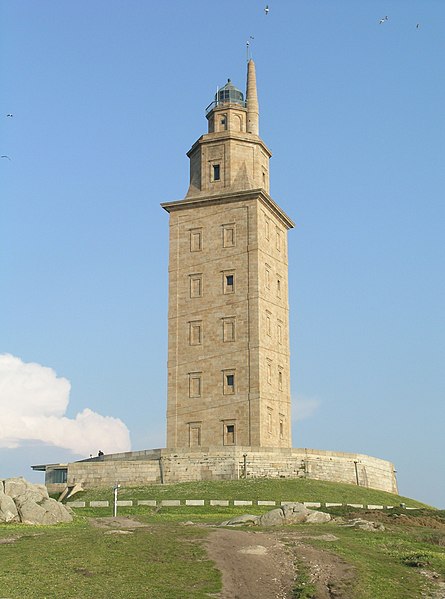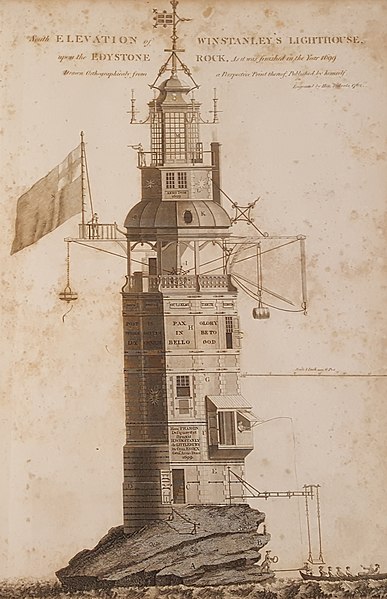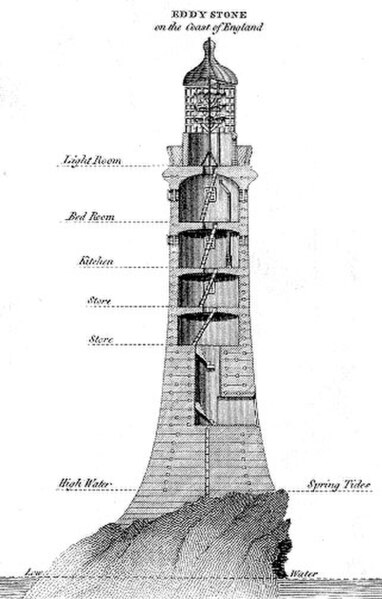A screw-pile lighthouse is a lighthouse which stands on piles that are screwed into sandy or muddy sea or river bottoms. The first screw-pile lighthouse to begin construction was built by the blind Irish engineer Alexander Mitchell. Construction began in 1838 at the mouth of the Thames and was known as the Maplin Sands lighthouse, and first lit in 1841. However, though its construction began later, the Wyre Light in Fleetwood, Lancashire, was the first to be lit.
Middle Bay Lighthouse in Mobile Bay
Seven Foot Knoll Lighthouse, Inner Harbor, Baltimore, Maryland
Fowey Rocks Light, near Key Biscayne, Florida
Examples of rock screw-pile lighthouses from a drawing by José Eugenio Ribera.
A lighthouse is a tower, building, or other type of physical structure designed to emit light from a system of lamps and lenses and to serve as a beacon for navigational aid, for maritime pilots at sea or on inland waterways.
The Lighthouse of Praia da Barra, on the west coast of Portugal
The Tower of Hercules lighthouse in northwest Spain
Original Winstanley lighthouse, Eddystone Rock, by Jaaziell Johnston, 1813.
John Smeaton's rebuilt version of the Eddystone Lighthouse, 1759. This represented a great step forward in lighthouse design.








